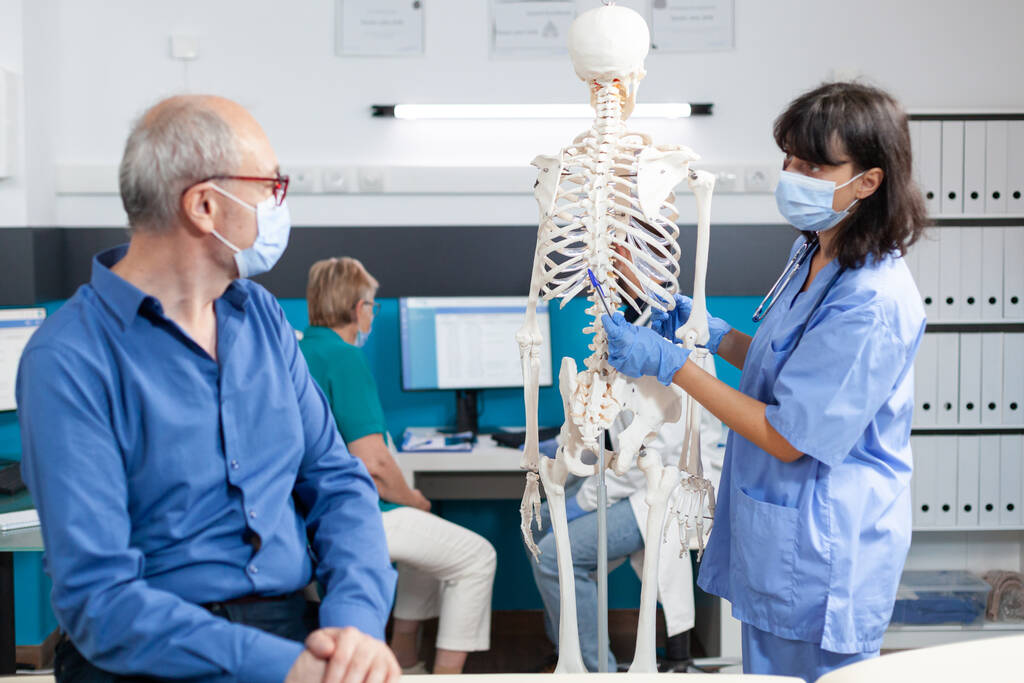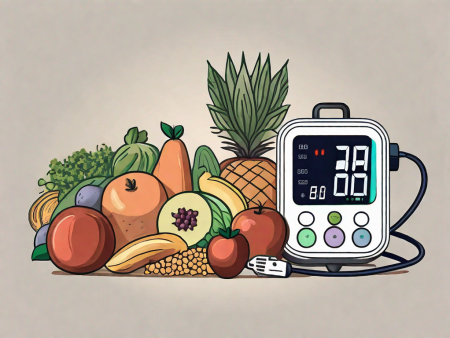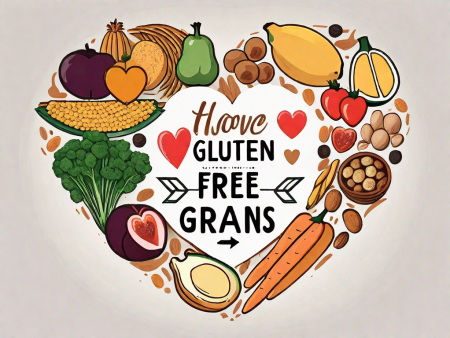Discover the ins and outs of osteoporosis and its impact on men’s health.
What Is Osteoporosis and How Does It Affect Men?
Welcome to the fascinating world of osteoporosis! You may have heard about this bone-depleting condition before, but did you know that men can be affected by it too? That’s right, fellas, osteoporosis isn’t just a women’s disease. So, let’s dive deep into understanding osteoporosis and explore how it impacts the male population!

Understanding Osteoporosis
First things first, let’s get acquainted with the ins and outs of osteoporosis. This bone-weakening condition is characterized by a decrease in bone density, making the bones fragile and prone to fractures. Now, you might be wondering, what causes this bone-busting phenomenon?
Osteoporosis is a complex condition influenced by various factors. One primary cause is age. As we grow older, our bones naturally become less dense and more susceptible to fractures. Additionally, hormonal changes play a significant role. Women, especially after menopause, experience a decline in estrogen levels, which accelerates bone loss. Men, on the other hand, may experience a decrease in testosterone levels, contributing to the development of osteoporosis.
But it’s not just age and hormones that contribute to this bone-deteriorating condition. Lifestyle choices also play a crucial role. Lack of physical activity, especially weight-bearing exercises like walking or weightlifting, can lead to weaker bones. Poor nutrition, particularly a diet low in calcium and vitamin D, can also increase the risk of osteoporosis. Smoking and excessive alcohol consumption further exacerbate the condition, as they interfere with the body’s ability to absorb calcium and impair bone formation.
The Science Behind Osteoporosis
Picture this: your bones are constantly remodeling, breaking down old bone tissue and replacing it with new bone. But with osteoporosis, this natural balance is disrupted. The body’s ability to form new bone slows down, while the breakdown of old bone continues at its usual pace. As a result, your bones become weak, like a flimsy house of cards. Not an ideal situation, right?
So, what exactly happens at a microscopic level? Osteoporosis affects the trabecular and cortical bone, which are the two main types of bone tissue. Trabecular bone, also known as spongy bone, forms the inner part of the bone, while cortical bone, also called compact bone, forms the outer layer. In osteoporosis, both types of bone tissue become thinner and less dense, compromising the structural integrity of the bone.
Moreover, the delicate balance between bone formation and resorption is disrupted. Osteoblasts, the cells responsible for bone formation, become less active, leading to a decrease in new bone production. At the same time, osteoclasts, the cells responsible for bone resorption, continue to break down old bone tissue. This imbalance results in a net loss of bone mass, making the bones more susceptible to fractures.
Common Misconceptions About Osteoporosis
Hold your horses! Before we delve deeper, let’s clear up some common misconceptions about osteoporosis. Many people associate it solely with the fairer sex, but gentlemen, this bone-thinning party could very well include you. So, let’s shake off that myth and embrace the reality that osteoporosis plays no favorites when it comes to gender.
Another misconception is that osteoporosis only affects older individuals. While it is true that age is a significant risk factor, osteoporosis can develop at any stage of life. In fact, certain medical conditions, such as hormonal disorders or gastrointestinal diseases, can predispose younger individuals to osteoporosis. Additionally, lifestyle factors like sedentary behavior and poor nutrition can contribute to the early onset of this bone-weakening condition.
Furthermore, osteoporosis is often perceived as an inevitable consequence of aging. While it is more prevalent in older adults, it is not an unavoidable part of the aging process. With proper lifestyle modifications, including regular exercise, a balanced diet rich in calcium and vitamin D, and avoidance of harmful habits like smoking and excessive alcohol consumption, the risk of osteoporosis can be significantly reduced.
The Prevalence of Osteoporosis in Men
Now that we’ve shattered that gender stereotype, let’s talk numbers. Osteoporosis isn’t just a condition that affects a couple of unlucky lads. Oh no, it’s far more widespread than you might think!
But before we dive into the statistics, let’s take a moment to understand what osteoporosis really is. Osteoporosis is a bone disease that occurs when the body loses too much bone, makes too little bone, or both. This leads to weakened bones that are more prone to fractures. While it is commonly associated with women, men are not immune to this condition.
Debunking the Myth: Osteoporosis Isn’t Just a Women’s Disease
Step aside, notion of osteoporosis being exclusively a women’s disease! Men, brace yourselves for some facts. Approximately 1 in 4 men over the age of 50 will experience an osteoporosis-related fracture in their lifetime. Quite surprising, isn’t it? So, gents, it’s time to pay attention and take charge of your bone health.
Now, you might be wondering why osteoporosis is more commonly associated with women. One reason is that women tend to have smaller, thinner bones than men. Additionally, the hormonal changes that occur during menopause can accelerate bone loss in women. However, men are not off the hook. As men age, their testosterone levels decrease, which can also contribute to bone loss and increase the risk of osteoporosis.
Age and Osteoporosis in Men
Age, oh age. The older we get, the more vulnerable our bones become. Osteoporosis doesn’t care if you’re a young stud or a seasoned gentleman. As the years go by, your bones naturally become less dense, making you more susceptible to this sneaky condition. It’s like playing a game of bone Jenga – the longer you play, the shakier things can get.
But don’t fret just yet! There are steps you can take to maintain strong and healthy bones as you age. Regular weight-bearing exercises, such as walking or weightlifting, can help improve bone density. Ensuring an adequate intake of calcium and vitamin D through a balanced diet or supplements can also support bone health. And of course, avoiding smoking and excessive alcohol consumption can help reduce the risk of osteoporosis.
So, gentlemen, it’s time to break free from the stereotype and prioritize your bone health. Remember, osteoporosis is not just a women’s disease – it affects men too. By understanding the risks, debunking the myths, and taking proactive measures, you can safeguard your bones and enjoy a life full of strength and vitality.
Symptoms of Osteoporosis in Men
Now, let’s talk symptoms. How do you know if osteoporosis has set up camp in your bones?
Osteoporosis, a condition characterized by weakened and brittle bones, can often be a silent intruder, lurking undetected until a fracture occurs. However, there are some early warning signs that may give you a clue to its presence. Keep your detective hat on and pay attention to any changes in your body.
Early Warning Signs
One of the possible early warning signs of osteoporosis in men is back pain. This pain may be persistent and worsen over time, making it important not to dismiss it as a normal part of aging. Another potential symptom is a loss of height. Osteoporosis can cause the vertebrae in the spine to weaken and collapse, leading to a decrease in height. Additionally, poor posture may be an indication of weakened bones. If you notice that you are slouching or have a hunched back, it might be time to investigate further.
It is crucial to be aware that these early warning signs can be subtle and easily overlooked. However, paying attention to your body and seeking medical advice if any of these symptoms ring a bell can help in early detection and intervention.
Advanced Symptoms
If osteoporosis progresses to a more advanced stage, the symptoms become more noticeable and severe. Frequent fractures, even from minor incidents, can be a sign that the bones have become extremely fragile. These fractures often occur in the hip, spine, or wrist and can significantly impact mobility and quality of life.
Another advanced symptom of osteoporosis is a curved spine, also known as kyphosis or dowager’s hump. This condition occurs when the vertebrae in the upper back collapse, causing the spine to curve forward. This curvature can lead to chronic pain, difficulty breathing, and a decreased ability to perform daily activities.
Reduced mobility is another potential symptom of advanced osteoporosis. As the bones weaken, it becomes increasingly challenging to move freely and perform physical activities. This can have a significant impact on independence and overall well-being.
While these advanced symptoms are more severe, it is essential to remember that prevention is key. By adopting a healthy lifestyle, including regular exercise, a balanced diet rich in calcium and vitamin D, and avoiding smoking and excessive alcohol consumption, you can significantly reduce the risk of developing osteoporosis and its associated complications.
Risk Factors for Men
Now, let’s talk about what puts you at risk for osteoporosis. It’s like a game of “avoid the bone-zapping hazards”! But don’t worry, we’ve got you covered with all the information you need to stay on top of your bone health.
Osteoporosis is often seen as a condition that primarily affects women, but men are not immune to its bone-weakening effects. In fact, studies have shown that men are more likely to suffer from fractures related to osteoporosis than they are from prostate cancer. So, gentlemen, it’s time to pay attention!
Lifestyle Factors
Your daily habits can have a big say in the fate of your bones. Smoking, excessive alcohol consumption, and a sedentary lifestyle can all increase your risk of developing osteoporosis. Let’s break it down:
First, smoking. Lighting up that cigarette not only harms your lungs, but it also wreaks havoc on your bones. Smoking has been shown to decrease bone density, making your bones more prone to fractures. So, put down that cigarette and take a deep breath of fresh air instead!
Next, excessive alcohol consumption. While enjoying a drink or two in moderation is generally fine, excessive alcohol intake can have detrimental effects on your bones. Alcohol interferes with the absorption of calcium, a vital mineral for bone health. So, swap your pint for a glass of water and give your bones the hydration they need!
Lastly, a sedentary lifestyle. Sitting on the couch all day may seem like a relaxing way to unwind, but it’s not doing your bones any favors. Lack of physical activity can lead to decreased bone density and muscle strength, increasing your risk of fractures. So, get off that couch and get moving! Whether it’s walking, jogging, or hitting the gym, any form of exercise will benefit your bones.
Genetic Factors
Blame it on your genes! Family history can play a role in your susceptibility to osteoporosis. If your parents or grandparents have experienced fractures related to the condition, it’s like a neon sign flashing “attention” – you should keep a closer eye on your bone health.
Understanding your genetic predisposition to osteoporosis can help you take proactive steps to maintain strong and healthy bones. It’s not just about luck; it’s about being aware and making informed choices.
So, gentlemen, now that you know the risk factors for osteoporosis, it’s time to take action. Quit smoking, moderate your alcohol consumption, get active, and stay vigilant about your bone health. Remember, prevention is always better than cure!
Diagnosis and Testing for Osteoporosis in Men
So, you suspect osteoporosis might be lurking in your bones. How do you find out for sure?

Medical History and Physical Exams
Your trusty healthcare provider will start by asking you about your medical history and performing a physical examination. They’ll take a closer look at your risk factors, check for any signs of bone loss, and assess your overall bone health. You’ll be in safe hands, no doubt!
Bone Density Testing
If further evaluation is needed, your doctor may recommend a bone density test. This painless and non-invasive procedure will measure the mineral content and density of your bones. It’s like a secret glimpse into the strength (or weakness) of your skeletal system.
And there you have it, folks! Osteoporosis isn’t just a women’s affair. Men, too, can find themselves entangled in its bone-zapping grip. But fear not! By understanding the science behind osteoporosis, recognizing the symptoms, and being aware of the risk factors, you can take charge of your bone health. So, keep those bones strong and sturdy, and let osteoporosis know that it’s dealing with some tough guys. Stay healthy, my friends!







Hello! Do you know if they make any plugins to help with SEO?
I’m trying to get my site to rank for some targeted keywords
but I’m not seeing very good success. If you know of any please share.
Many thanks! You can read similar article here: Warm blankets
I’m so in love with this. You did a great job!!
Can you write more about it? Your articles are always helpful to me. Thank you!
Great content! Super high-quality! Keep it up!
May I request more information on the subject? All of your articles are extremely useful to me. Thank you!
You helped me a lot with this post. I love the subject and I hope you continue to write excellent articles like this.
Thank you for your help and this post. It’s been great.
Thanks for posting. I really enjoyed reading it, especially because it addressed my problem. It helped me a lot and I hope it will help others too.